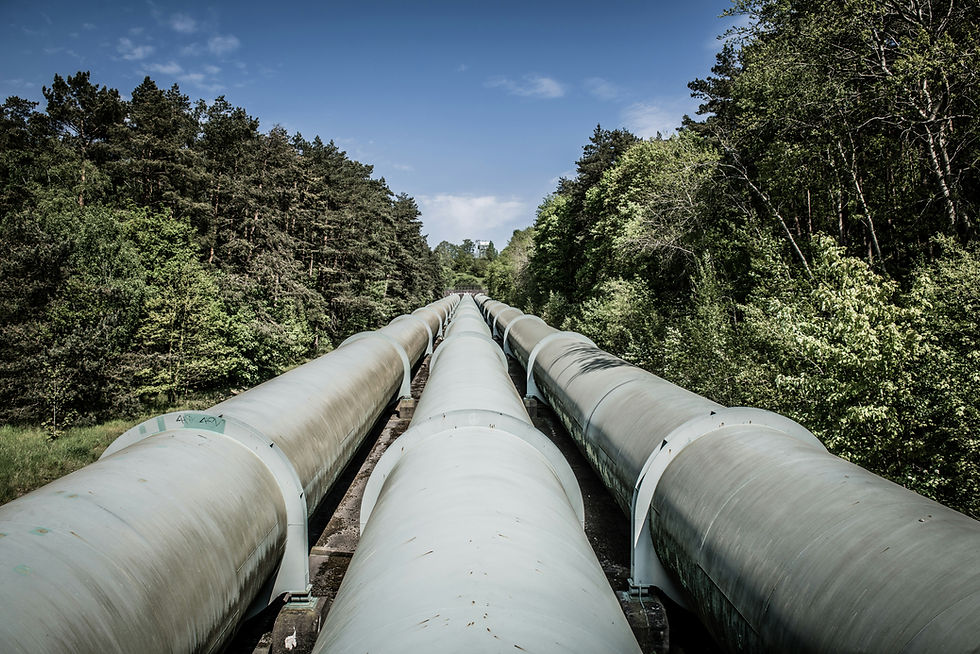Let's flex
- timgulley
- Jun 19, 2020
- 2 min read
Should a pipeline carrying water or wastewater be strong and rigid to prevent bursting or the exact opposite?

In any country there are thousands of miles of pipelines carrying water or wastewater to and from communities.
In most homes across the UK there is a scaled down version of this, with the incoming water pipe feeding the house and drainage pipes taking the waste away. These pipes all seem fairly rigid.
If you live in a remote area your sewage may be treated at your home or drain away to your local pump station. The pipes in the pump station are made of solid cast iron or sometimes galvanised steel. Rigid must be the way forward. Or is it?
Coming from the pump station is typically a high-density polyethylene (HDPE) pipe. As standard, this is comes with different pressure ratings. Pressure ratings? With a lot of pump stations these are either 10 bar or 16 bar rated. 10 or 16 bar? That’s up to 230 psi, 4 times more than what my tyres are pumped up to. What may not be so well known is that these pipes are designed to flex.
Wastewater pump stations are not designed to pressurise the pipe they pump into. Rather, they are designed to deliver a quantity of water in a given time frame to a certain destination. Like, deliver 10 tomatoes every hour to the house on the top of the hill. Typically, this is measured in litres per second (the 10 tomatoes every hour) against a head in metres (to the house on top of the hill).
As a result of this, the pressure in the pipelines doesn’t come from operating pressures, it comes from surge pressures. These are created when pumps stop, pumps start, valves are closed or other similar events.
So, it would make sense to have strong, rigid pipes. You are wrong.
Along with the difficulties of laying long lengths of rigid, straight pipes over difficult terrain, there is another challenge. Strong, rigid pipes don’t have much give. When a surge event happens, all the shock waves are carried a lot quicker through rigid pipe such as cast iron and the likelihood of a surge shock affecting the pumps, pipes, valves, air valves etc. is greatly increased.
HDPE pipes are designed to not only reduce the chance of these shocks creating the conditions that will affect plant and equipment assets but absorb some of the energy created by expanding and contracting, even under the ground.
When testing rising mains, the pressure in the pipe should drop by predetermined amounts as the pressure of the water in the pipe pushes the pipe to its limits of size. The reason for this is so that the likelihood of a potential surge event is reduced by the very nature of the way HDPE pipes react.
In all, strong rigid pipes are great for inside your house, but when pumping up and over a hill, it is best to go for something a little more flexible.
.png)


Comments